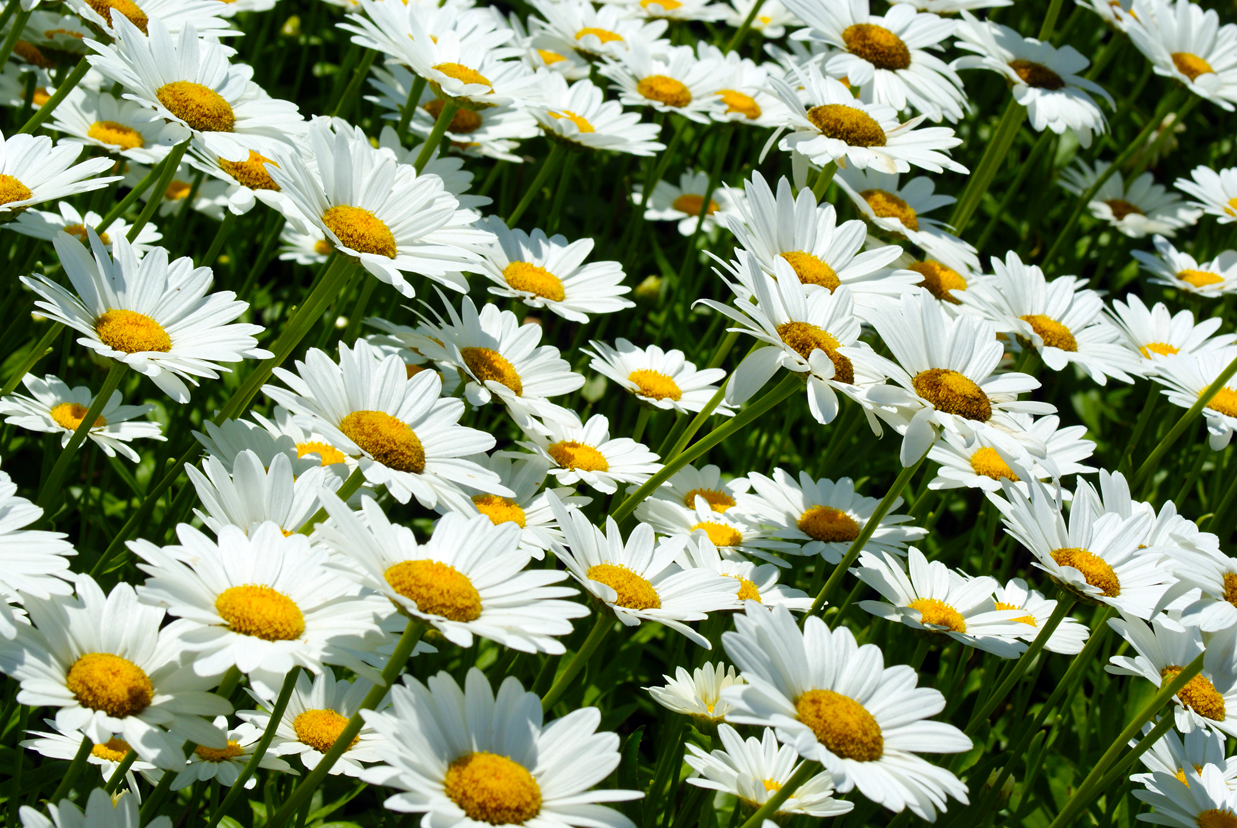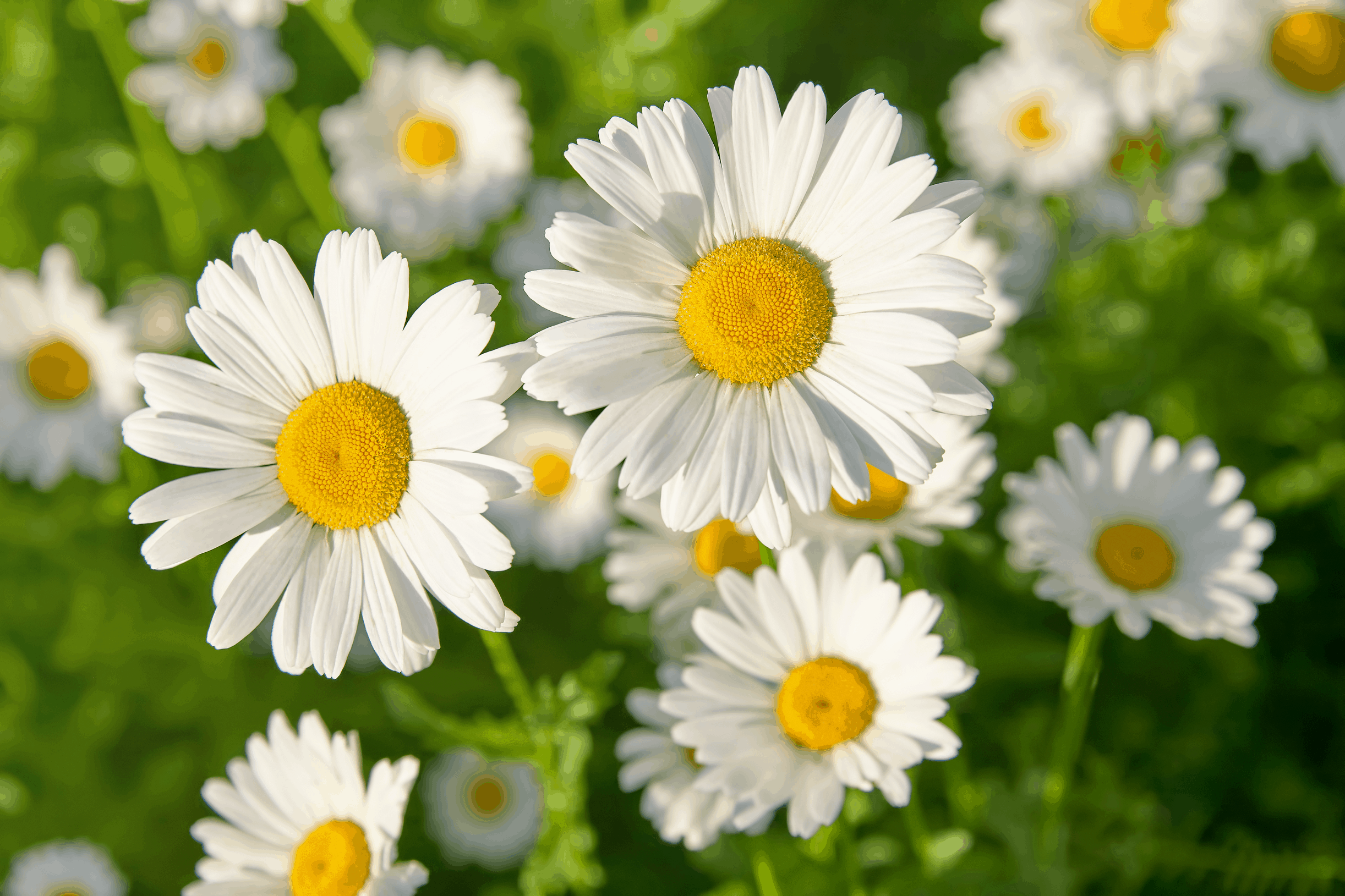Welcome, fellow garden enthusiasts, to a whimsical journey through the vibrant and varied world of daisies! These charming blossoms, often the cheerful face of many a garden, hold a special place in our hearts. With their sunny yellow centers, bright white petals, and long green stems, daisies are the very archetype of a flower—the simplest one to draw, the ideal for weaving into chains. Bright, cheerful daisies make a great addition to flower gardens, reminding us of the sun and having an energizing effect on us. But even these seemingly resilient symbols of joy can face significant challenges.
From popular and colorful gerbera daisies to yarrow, these versatile plants, part of a diverse family, thrive in various climates around the world, originating in Europe and temperate regions of Asia. They now grow everywhere except for Antarctica. However, the beauty and vitality of these beloved blooms can be threatened by various factors, leading to what we might call "daisies destruction." Understanding these threats and how to mitigate them is crucial for any gardener dedicated to preserving the health and vibrancy of their daisy patches.
Table of Contents
- The Enduring Charm of Daisies
- Understanding "Daisies Destruction": A Gardener's Guide
- Common Pests That Threaten Daisies
- Battling Daisy Diseases: Fungal Foes and More
- Environmental Stressors: When Nature Turns Harsh
- Human Impact: Unintentional Daisy Destruction
- Cultivating Resilience: Proactive Measures Against Daisy Destruction
- Beyond the Garden: Daisies in Culture and Conservation
The Enduring Charm of Daisies
Daisies are one of the most popular perennial flowers planted in garden beds and in pots around the world. These low-maintenance flowers come in a variety of different colors and forms, making them incredibly versatile for any garden design. Thinking of adding some daisies to your garden this season but aren't sure which types to add? You can find types of daisies for your garden, including the classic shasta and colorful gerbera. Opt for classic shasta daisies for a timeless look or gerbera daisies for vibrant colors. If you enjoyed our post featuring the top 5 types of daisies, along with growing tips, you’ll love our list of 27 different types of daisies. All types of daisies in the family Asteraceae, to which they belong, offer unique beauty and appeal. Their widespread appeal isn't just aesthetic; daisies remind us of the sun and have an energizing effect on us, making them a source of natural upliftment in any landscape. This intrinsic value is precisely why understanding and preventing "daisies destruction" is so important for gardeners and nature lovers alike.Understanding "Daisies Destruction": A Gardener's Guide
When we speak of "daisies destruction," we are referring to the various factors that can lead to the decline, damage, or even death of these beautiful plants. This isn't about an active, malevolent force, but rather the cumulative effect of pests, diseases, environmental stressors, and even improper human care. Recognizing the signs of distress is the first step in effective intervention. A healthy daisy plant will exhibit vibrant foliage, strong stems, and abundant blooms from late spring until fall. Any deviation from this, such as yellowing leaves, stunted growth, wilting, or chewed petals, can be an indicator of underlying issues that contribute to the destruction of daisies. Our goal as gardeners is to identify these threats early and implement strategies to protect our beloved flowers.Common Pests That Threaten Daisies
Pests are often the most visible culprits behind "daisies destruction." These tiny invaders can cause significant damage by feeding on leaves, stems, and flowers, weakening the plant and making it susceptible to further issues. Vigilance is key to managing pest populations before they get out of control.Aphids: The Sap-Sucking Menace
Aphids are small, soft-bodied insects that cluster on new growth, buds, and the undersides of leaves. They feed by sucking sap from the plant, which can lead to distorted growth, yellowing leaves, and a sticky residue called honeydew. Severe infestations can significantly weaken daisy plants, hindering their ability to flower and thrive.- Identification: Look for tiny green, black, or brown insects.
- Damage: Stunted growth, curled leaves, honeydew (which can lead to sooty mold).
- Control: A strong spray of water can dislodge them. Introduce natural predators like ladybugs. For severe cases, use insecticidal soap or neem oil, ensuring thorough coverage of affected areas.
Slugs and Snails: Nighttime Nibblers
These mollusks are particularly fond of young, tender daisy leaves and can cause significant defoliation overnight. They leave behind tell-tale silvery slime trails, making their presence obvious.- Identification: Look for slimy trails and ragged holes in leaves.
- Damage: Irregular holes in leaves and petals, especially on lower foliage.
- Control: Hand-picking at dusk or dawn, setting beer traps, or using organic slug baits. Keeping the garden area free of debris where they can hide is also helpful.
Leaf Miners: Tunneling Through Foliage
Leaf miners are the larvae of small insects (flies, moths, or beetles) that tunnel within the leaf tissue, creating winding trails or blotches. While they rarely kill the plant, their feeding activity can significantly reduce the aesthetic appeal and photosynthetic capacity of the leaves, contributing to the overall "daisies destruction."- Identification: Irregular, winding tunnels or blotches on leaves.
- Damage: Aesthetic damage, reduced plant vigor.
- Control: Remove and destroy infested leaves. In severe cases, certain systemic insecticides may be used, but biological controls are often preferred.
Spider Mites: Tiny Weavers of Destruction
These tiny arachnids are often overlooked until their damage is significant. They thrive in hot, dry conditions and feed on plant cells, causing stippling (tiny yellow or white dots) on leaves. Heavy infestations can lead to webbing and a general decline in plant health.- Identification: Fine webbing on leaves and stems, tiny moving dots on the undersides of leaves.
- Damage: Stippled, bronzed, or yellowed leaves; defoliation.
- Control: Regular misting to increase humidity, washing plants with a strong stream of water, or applying insecticidal soaps or horticultural oils.
Battling Daisy Diseases: Fungal Foes and More
Plant diseases, often caused by fungi, bacteria, or viruses, can be more insidious than pests, sometimes leading to rapid "daisies destruction" if not addressed promptly. Proper air circulation, appropriate watering, and good sanitation are critical preventative measures.Powdery Mildew: The White Coating
This common fungal disease appears as white, powdery patches on leaves, stems, and flowers. It thrives in humid conditions with poor air circulation. While rarely fatal, it weakens the plant, reduces photosynthesis, and diminishes aesthetic value.- Identification: White, flour-like spots on plant surfaces.
- Damage: Distorted growth, yellowing leaves, reduced flowering.
- Control: Improve air circulation, avoid overhead watering, remove affected parts, or use fungicides (organic options like neem oil or potassium bicarbonate).
Botrytis Blight (Gray Mold): The Damp Destroyer
Botrytis blight is a fungal disease that causes soft, brown spots on leaves and petals, often covered with a fuzzy gray mold. It's prevalent in cool, wet conditions and can quickly spread, leading to significant "Related Resources:



Detail Author:
- Name : Billie Jaskolski
- Username : bgorczany
- Email : emacejkovic@gmail.com
- Birthdate : 2006-03-02
- Address : 84030 Austen Mountain Apt. 196 Pinkiechester, MA 91031
- Phone : 1-912-498-7868
- Company : Carter, Kohler and Nienow
- Job : Crushing Grinding Machine Operator
- Bio : Maiores dolorem veritatis aut sunt aut fuga ad nihil. Natus voluptatibus odit et. Rerum et recusandae sit impedit.
Socials
tiktok:
- url : https://tiktok.com/@caden577
- username : caden577
- bio : Sed labore minus officiis consequatur animi.
- followers : 1279
- following : 1095
linkedin:
- url : https://linkedin.com/in/cadenboyle
- username : cadenboyle
- bio : Aut aliquam perspiciatis quidem eum nisi.
- followers : 1052
- following : 2258
facebook:
- url : https://facebook.com/caden_real
- username : caden_real
- bio : Quisquam sint officiis earum recusandae harum voluptatem eos.
- followers : 3073
- following : 1312
instagram:
- url : https://instagram.com/caden_dev
- username : caden_dev
- bio : Doloremque commodi reiciendis aut. Quas ratione voluptatem atque aut distinctio quos.
- followers : 2538
- following : 1948
twitter:
- url : https://twitter.com/caden_id
- username : caden_id
- bio : Expedita doloribus saepe voluptatum. Quod minima et modi sed. Ab sint reiciendis eos dolore cumque similique. Quo ipsum praesentium aut fugit eius.
- followers : 2061
- following : 2104